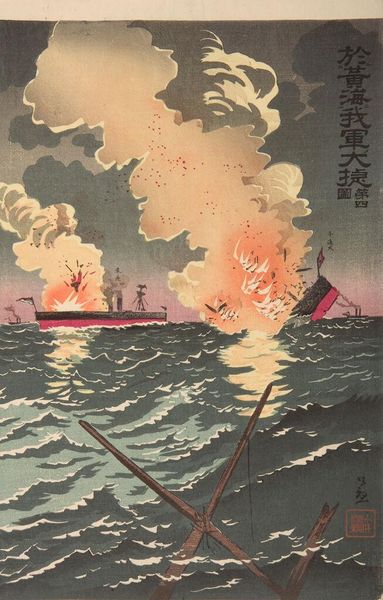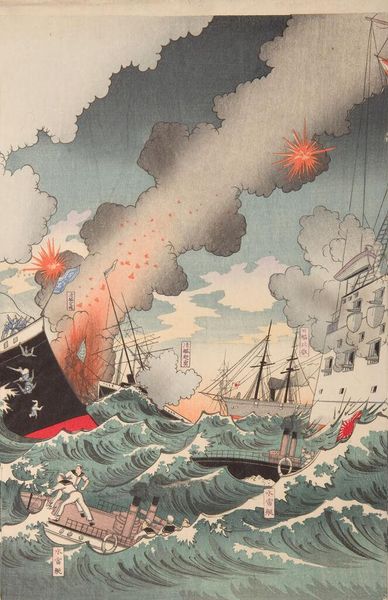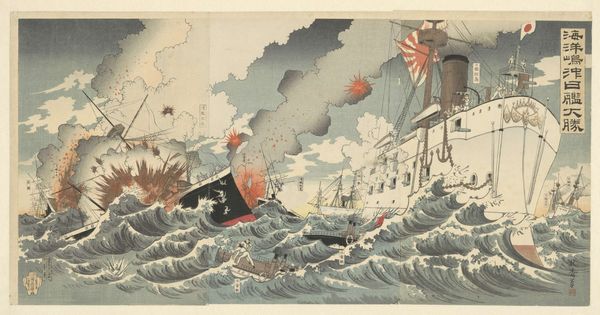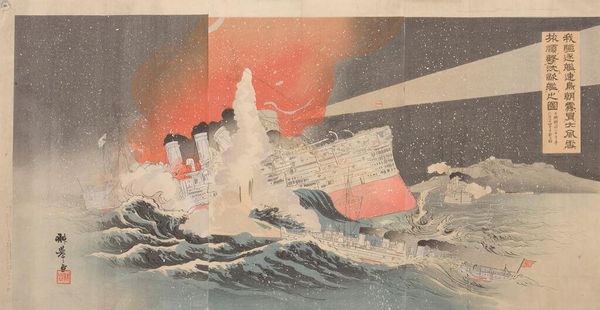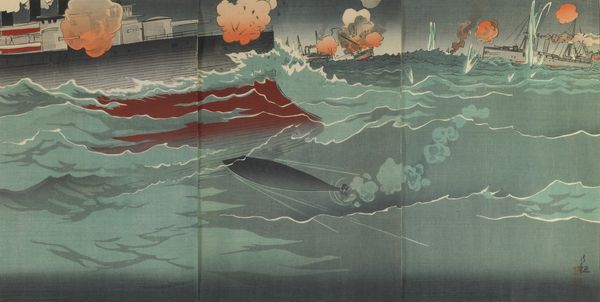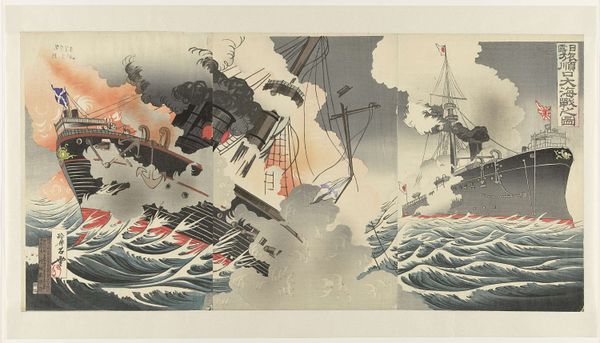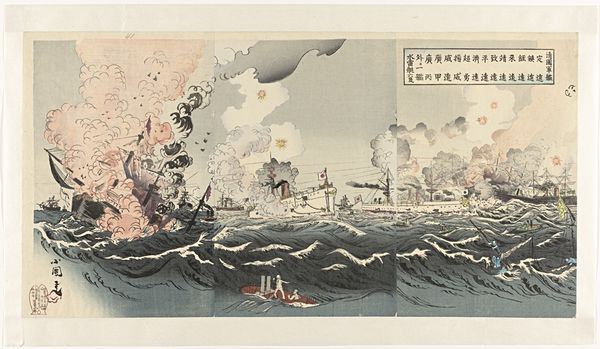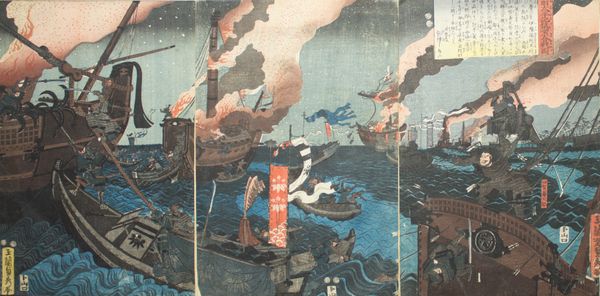
Copyright: Public Domain: Artvee
Curator: We're now looking at "The Naval Battle of Pungdo in Korea," a woodblock print from 1894 by Kobayashi Kiyochika. Editor: It’s incredibly dramatic! That fiery explosion against the dark sea and night sky is quite something. A real contrast between destruction and stillness. Curator: Kiyochika captured a pivotal moment from the First Sino-Japanese War. What interests me are the ways fire here represents something beyond destruction, perhaps a cultural rupture as well as the representation of technological advance. Fire, after all, is transformative. Editor: I agree; and I think the material choices really amplify that drama. Using woodblock printing allowed for sharp contrasts and detailed linework, emphasizing both the chaos of the battle and the sort of labor required for its depictions. It also makes these events much more visible in their time through reproduction, especially given it uses watercolours for its tones. It puts this pivotal historical moment in circulation. Curator: Yes, the Ukiyo-e tradition serves that purpose beautifully, taking a scene of modern warfare and embedding it in the visual language of popular culture, ensuring the memory of this naval engagement permeates society through affordable art. Notice the crescent moon, traditionally symbolising renewal, hangs right beside that burning ship! It seems to pose a question. Editor: I'd imagine the materiality of those warships, likely built in European shipyards, presents such a striking counterpoint to the local materials used to create the print. It presents questions of colonial and imperial conflict through competing modes of production. And what do you make of that coastline in the corner? It looks as if the land itself is being invaded! Curator: Precisely! Kiyochika isn't just showing a battle; he’s portraying the shifting power dynamics and the cultural anxieties of a nation grappling with rapid modernisation. These prints served as tools to rally popular support for Japan’s military endeavors. Editor: It’s all quite visceral, and I appreciate how Kiyochika brings together different elements through that medium of reproduction and its effects. Considering these elements allows us to gain insights into the human experiences, ideologies, and even technologies shaping the conflicts represented. Curator: Indeed. Kiyochika reminds us that even historical records carry symbolic weight and the traces of their moment. Editor: Yes, considering art’s methods reveals how artists engaged with urgent material realities!
Comments
No comments
Be the first to comment and join the conversation on the ultimate creative platform.
